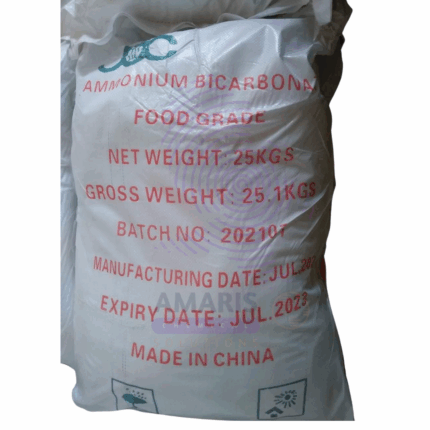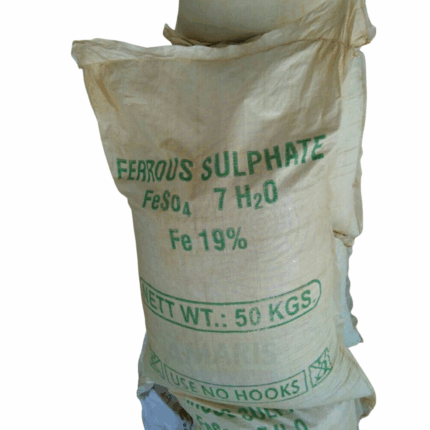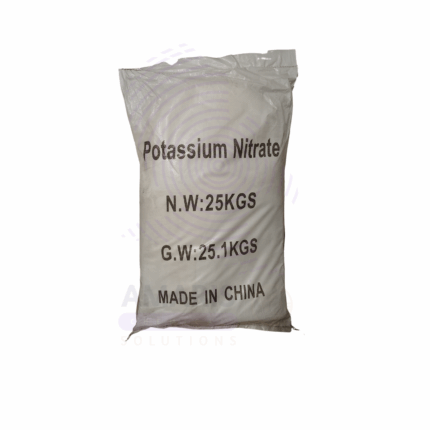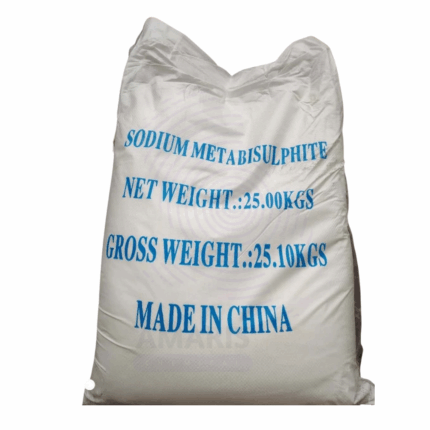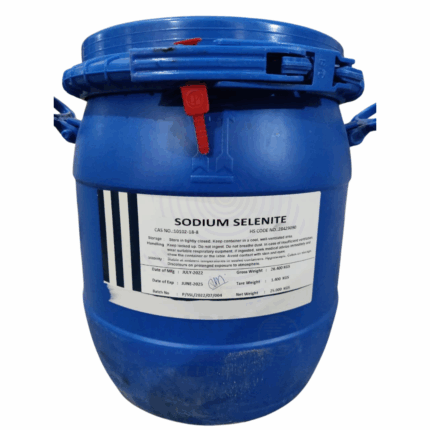Amprolium Hydrochloride BP USP
Amprolium Hydrochloride is a white, odorless, crystalline powder used primarily as a coccidiostat, which means it inhibits the growth of Eimeria species (protozoan parasites) responsible for coccidiosis in poultry and other animals. It works by mimicking thiamine (vitamin B1), thereby competitively inhibiting thiamine uptake by the parasite, disrupting its metabolism, and preventing its proliferation. Amprolium HCl is widely used in veterinary medicine, especially in poultry farming, and is often included in feed or drinking water. It complies with BP 2008 and USP 32 pharmacopeial standards.
-
Table of Contents Toggle
Uses
Primary Uses
Veterinary Medicine – Coccidiostat
- Poultry (chickens, turkeys, ducks):
- Used for prevention and treatment of coccidiosis, a major parasitic disease affecting intestinal health and feed efficiency.
- Administered via feed or drinking water either continuously or in specific programs.
- Effective against Eimeria tenella, E. necatrix, E. acervulina, and other species.
- Calves, Lambs, Goats, Rabbits, and other livestock:
- Used to prevent or treat protozoal infections, especially in young or weaning animals.
Veterinary Formulations
- Incorporated into premixes, soluble powders, oral solutions, and sometimes injectables.
- Can be used alone or in combination with other agents (e.g., sulfonamides, vitamins).
- Included in preventive health protocols in large-scale farming systems.
Secondary Uses
Pharmaceutical Ingredient in Animal Drug Manufacturing
- Used as an API (Active Pharmaceutical Ingredient) in licensed veterinary medicinal products (VMPs).
- Sometimes incorporated in multi-component formulations with electrolytes or other antiparasitic agents.
Agricultural & Research Applications
- Used in parasitological studies for inducing or preventing coccidial infections in laboratory settings.
- Employed in diagnostic research to evaluate coccidia resistance or drug efficacy.
Ornamental Birds & Game Birds
- Occasionally used under veterinary supervision in aviaries, pet birds, and game birds like quail and pheasants.
1. Basic Identification Attributes
- Chemical Name (IUPAC): 1-[(4-Amino-2-propylpyrimidin-5-yl)methyl]-2-methylpyridinium chloride
- Common/Trade Names: Amprolium HCl, Amprolium Hydrochloride
- CAS Number: 137-88-2
- HS Code: 2933.59.95
- Molecular Formula: C₁₄H₁₉ClN₄
- Molecular Weight: 278.78 g/mol
- Synonyms: Amprolium monohydrochloride, Amprol, Coccidiostat HCl
2. Physical & Chemical Properties
- Appearance: White to off-white crystalline powder
- Odor: Odorless
- Solubility: Freely soluble in water; practically insoluble in ethanol or ether
- Melting Point: 165–170°C (decomposes)
- pH (1% solution): 4.5–5.5
- Stability: Stable under recommended storage conditions; may degrade under strong light or humidity
- Particle Size: Can be micronized for uniform feed mixing
- Bulk Density: ~0.45–0.60 g/cm³
3. Safety & Hazard Attributes
- GHS Classification: Not classified as hazardous
- NFPA Ratings:
- Health: 1 (low hazard)
- Flammability: 0 (non-flammable)
- Reactivity: 0 (stable)
- Toxicity:
- Oral LD₅₀ (rat): ~3,000 mg/kg (low acute toxicity)
- Non-teratogenic, non-mutagenic in standard tests
- Reactivity: Stable under normal conditions; avoid mixing with oxidizers
- Incompatibilities: Strong oxidizing agents, strong acids or bases
4. Storage & Handling Attributes
- Storage Conditions:
- Store in tightly sealed containers
- Keep in a cool, dry, well-ventilated place
- Protect from light and moisture
- Shelf Life: 3–5 years under proper storage
- Packaging Types:
- HDPE drums, fiber drums with PE liners, laminated foil bags
- Handling Precautions:
- Avoid inhalation of dust; use appropriate PPE (gloves, goggles, dust mask)
5. Regulatory & Compliance Attributes
- Pharmacopoeia Standards:
- BP 2008 Compliant
- USP 32 Compliant
- Veterinary Approval:
- Approved by FDA (USA), EMA (EU), and other international veterinary authorities
- Residue Limits (MRLs):
- MRLs vary by species and jurisdiction; withdrawal periods required before slaughter
- Transportation:
- Not classified as hazardous for transport
- Waste Disposal:
- Dispose of in accordance with local environmental and pharmaceutical regulations
6. Environmental & Health Impact
- Ecotoxicity:
- Low toxicity to aquatic life at typical usage levels
- Must avoid direct discharge into water bodies
- Persistence:
- Biodegradable under aerobic conditions
- Bioaccumulation:
- Low potential for bioaccumulation
- Public Health Risk:
- Requires veterinary supervision to avoid resistance or misuse
- Carcinogenicity/Mutagenicity:
- Not classified as carcinogenic or mutagenic
-
Safety Handling Precautions
- PPE Requirements:
- Wear protective gloves, lab coat, goggles, and dust mask or respirator when handling powders.
- Hygiene Measures:
- Do not eat, drink, or smoke while handling.
- Wash hands thoroughly after use.
First Aid Measures
- Inhalation:
- Move to fresh air. Seek medical attention if symptoms persist.
- Skin Contact:
- Wash with soap and water. Remove contaminated clothing.
- Eye Contact:
- Rinse thoroughly with water for at least 15 minutes.
- Ingestion:
- Rinse mouth with water. Do not induce vomiting. Seek medical help.
Firefighting Measures
- Flammability:
- Non-flammable solid
- Extinguishing Media:
- Use dry chemical, CO₂, water spray, or foam
- Special Precautions:
- Avoid dust inhalation; use SCBA in confined areas
- Thermal Decomposition:
- May release nitrogen oxides, carbon monoxide


 Preservatives(food)
Preservatives(food) Flavor Enhancers
Flavor Enhancers Acidulants
Acidulants Sweeteners
Sweeteners Antioxidants
Antioxidants Colorants(food)
Colorants(food) Nutraceutical Ingredients (food)
Nutraceutical Ingredients (food) Nutrient Supplements
Nutrient Supplements Emulsifiers
Emulsifiers
 Collectors
Collectors Dust Suppressants
Dust Suppressants Explosives and Blasting Agents
Explosives and Blasting Agents Flocculants and Coagulants
Flocculants and Coagulants Frothers
Frothers Leaching Agents
Leaching Agents pH Modifiers
pH Modifiers Precious Metal Extraction Agents
Precious Metal Extraction Agents
 Antioxidants(plastic)
Antioxidants(plastic) Colorants (Pigments, Dyes)
Colorants (Pigments, Dyes) Fillers and Reinforcements
Fillers and Reinforcements Flame Retardants
Flame Retardants Monomers
Monomers Plasticizers
Plasticizers Polymerization Initiators
Polymerization Initiators Stabilizers (UV, Heat)
Stabilizers (UV, Heat)
 Antifoaming Agents
Antifoaming Agents Chelating Agents
Chelating Agents Coagulants and Flocculants
Coagulants and Flocculants Corrosion Inhibitors
Corrosion Inhibitors Disinfectants and Biocides
Disinfectants and Biocides Oxidizing Agents
Oxidizing Agents pH Adjusters
pH Adjusters Scale Inhibitors( water)
Scale Inhibitors( water)
 Antioxidants(cosmetic)
Antioxidants(cosmetic) Emollients
Emollients Fragrances and Essential Oils
Fragrances and Essential Oils Humectants
Humectants Preservatives
Preservatives Surfactants(cosmetic)
Surfactants(cosmetic) Thickeners
Thickeners UV Filters
UV Filters
 Fertilizers
Fertilizers Soil Conditioners
Soil Conditioners Plant Growth Regulators
Plant Growth Regulators Animal Feed Additives
Animal Feed Additives Biostimulants
Biostimulants Pesticides (Herbicides, Insecticides, Fungicides)
Pesticides (Herbicides, Insecticides, Fungicides)
 Active Pharmaceutical Ingredients (APIs)
Active Pharmaceutical Ingredients (APIs) Excipients
Excipients Solvents(pharmaceutical)
Solvents(pharmaceutical) Antibiotics
Antibiotics Antiseptics and Disinfectants
Antiseptics and Disinfectants Vaccine Adjuvants
Vaccine Adjuvants Nutraceutical Ingredients (pharmaceutical)
Nutraceutical Ingredients (pharmaceutical) Analgesics & Antipyretics
Analgesics & Antipyretics
 Analytical Reagents
Analytical Reagents Solvents(lab)
Solvents(lab) Chromatography Chemicals
Chromatography Chemicals Spectroscopy Reagents
Spectroscopy Reagents microbiology-and-cell-culture-reagents
microbiology-and-cell-culture-reagents Molecular Biology Reagents
Molecular Biology Reagents Biochemical Reagents
Biochemical Reagents Inorganic and Organic Standards
Inorganic and Organic Standards Laboratory Safety Chemicals
Laboratory Safety Chemicals Specialty Laboratory Chemicals(Special Laboratory Equipment)
Specialty Laboratory Chemicals(Special Laboratory Equipment)
 Demulsifiers
Demulsifiers Hydraulic Fracturing Fluids
Hydraulic Fracturing Fluids Scale Inhibitors(oil)
Scale Inhibitors(oil) Surfactants(oil)
Surfactants(oil) Drilling Fluids
Drilling Fluids
 Dyes and Pigments
Dyes and Pigments Bleaching Agents
Bleaching Agents Softening Agents
Softening Agents Finishing Agents
Finishing Agents Antistatic Agents
Antistatic Agents
 Admixtures
Admixtures Waterproofing Agents
Waterproofing Agents Sealants and Adhesives
Sealants and Adhesives Curing Compounds
Curing Compounds Concrete Repair Chemicals
Concrete Repair Chemicals Anti-Corrosion Coatings
Anti-Corrosion Coatings
 Surfactants(cleaning)
Surfactants(cleaning) Builders
Builders Enzymes
Enzymes Solvents (Cleaning)
Solvents (Cleaning) Fragrances
Fragrances
 Electronic Chemicals
Electronic Chemicals Catalysts
Catalysts Lubricants
Lubricants Photographic Chemicals
Photographic Chemicals Refrigerants
Refrigerants Automotive chemicals
Automotive chemicals Pyrotechnic Chemicals
Pyrotechnic Chemicals
 Biodegradable Surfactants
Biodegradable Surfactants Bio-based Solvents
Bio-based Solvents Renewable Polymers
Renewable Polymers Carbon Capture Chemicals
Carbon Capture Chemicals Wastewater Treatment Chemicals
Wastewater Treatment Chemicals
 Pigments
Pigments Solvents(paint)
Solvents(paint) Specialty Coatings
Specialty Coatings Binders/Resins
Binders/Resins Additives
Additives Driers
Driers Anti-Corrosion Agents
Anti-Corrosion Agents Functional Coatings
Functional Coatings Application-Specific Coatings
Application-Specific Coatings
 Fresh Herbs
Fresh Herbs Ground Spices
Ground Spices Whole Spices
Whole Spices Spice Blends
Spice Blends Dried Herbs
Dried Herbs
 Leavening Agents
Leavening Agents Dough Conditioners
Dough Conditioners Flour Treatments
Flour Treatments Fat Replacers
Fat Replacers Decoratives
Decoratives Preservatives(baking)
Preservatives(baking)
 Plasticizers & Softeners
Plasticizers & Softeners Reinforcing Agents
Reinforcing Agents Adhesion Promoters
Adhesion Promoters Vulcanizing Agents
Vulcanizing Agents Antidegradants
Antidegradants Blowing Agents
Blowing Agents Fillers & Extenders
Fillers & Extenders Accelerators & Retarders
Accelerators & Retarders



